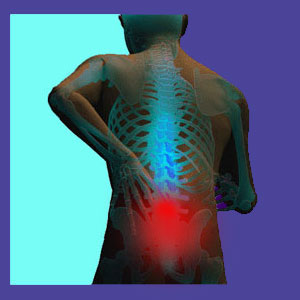
Lumbar spine instability can cause serious functional problems, as well as chronic pain. In some cases, spinal instability can create paralysis, incontinence and sexual dysfunction, as well as other horrific symptomatic expressions. Although not considered as clinically significant in some ways as cervical spinal instability, lumbar versions are still medical emergencies that are most commonly treated with surgical intervention in the form of dramatic spondylodesis.
What is spinal instability in the lower back and what causes it? What consequences does it produce in the local lumbar region, as well as in the overall vertebral column? Is there a cure for an unstable spine? These are all questions that we receive regularly on the sites of The Cure Back Pain Network. It is time to answer them all for the benefit of our readers worldwide.
This essay provides clear information about the symptoms, causes and treatment of lumbar spine instability.
Lumbar Spine Instability Symptoms
The lumbar spine is a foundation for the higher regions of the vertebral column. If the lumbar region is unstable, then the remainder of the backbone will likely suffer collateral consequences, as well. The spinal cord ends at L1 in most people, making lumbar instability less of a neurological threat than in the cervical or thoracic zones of the spine. However, since the cauda equina nerve roots continue to exist in the lumbar central spinal canal, instability can still have severe consequences for patients in terms of functionality and pain.
Microinstabilities will not affect the entire spine, but may create pain issues or mechanical dysfunction locally in the lumbar region. These conditions usually result from minor spondylolisthesis, facet joint deterioration, severe disc issues and some particular spinal abnormalities. Microinstability will not generally threaten nerve functionality to any major extent.
Macroinstability will affect the entire spine and is usually the result of more significant functional problems, such as severe spondylolisthesis, extreme hyperlordosis, dire traumatic injury to the lower back and various congenital issues that might be present from birth. These conditions have a greater chance of negatively influencing neurological functionality and may even result in paralysis, severe pain symptomology, incontinence and sexual dysfunction. Many patients will be unable to stand, walk or perform many physical actions with the lower body and some will be partially or completely disabled by their lower back pain.
Secondary spinal instability is caused by deficient muscles that can not adequately support and mobilize the spine. These scenarios often involve neuromuscular disease, dire mindbody muscular pain syndrome (such as fibromyalgia) or extreme obesity and its usual collateral health catastrophes.
Spinal Instability Causes
The spine is much like a building. It is a vertical column of bones called vertebrae, separated by spinal spacers called intervertebral discs. Each vertebra is linked to the ones above and below it by the facet joints. The entire spine contains a hollow space which runs through the middle of it, called the central spinal canal. In this spinal canal, the spinal cord, spinal nerves and other important tissues reside. At each spinal level, some of these nerves exit the spine through openings in between each vertebral bone called neural foramen. These nerves then go on to serve the motor, sensory and autonomic functionalities for much of the anatomy. The overall balance and positioning of the spine is regulated by various muscles and ligaments that also provide support and the ability to mobilize the spine through an extensive range of motion.
Microinstabilities can occur when specific structures that link the vertebrae fail to some degree at one or 2 spinal levels. These conditions often affect the facet joints, intervertebral discs, spinal ligaments (ligamentum flavum or posterior longitudinal ligament) or vertebral alignment or curvature. Microinstabilities are much less clinically significant than microinstabilities.
Macroinstabilities threaten the overall structure of the vertebral column and might also pose a danger to the neurological tissues contained within the central or foraminal spinal canals. Macroinstability can occur due to severe vertebral migration, dire facet joint deterioration over many levels, widespread ligamentous dysfunction or ossification, extreme atypical spinal curvature (lordosis or scoliosis) as well as the collateral consequence of massive trauma to the overall lumbar spine.
Lumbar Spine Instability Treatment
Most microinstabilities can be treated nonsurgically, using physical and exercise therapy to strengthen and support the spine. Some might require minimally invasive surgical procedures to resolve, but these interventions are almost always considered optional and geared more towards symptom resolution than actual medical necessity.
Macroinstability in the lumbar spine usually require much more drastic treatment, such as spinal fusion over several vertebral levels. In select circumstances, less invasive operations might be able to relieve focal areas of instability using laminectomy, discectomy and other techniques, instead of spinal fusion.
It is crucial to receive accurate diagnostic evaluation for any suspected lumbar spine instability issue. Failure to benefit from a correct diagnosis might sentence a patient to protracted pain and contraindicated treatment. Remember that many cases of lower back pain are misdiagnosed, so never take a single diagnostic opinion to be fact until proven and confirmed by at least one or two other medical experts.
Lower Back Pain > Causes of Lower Back Pain > Lumbar Spine Instability





